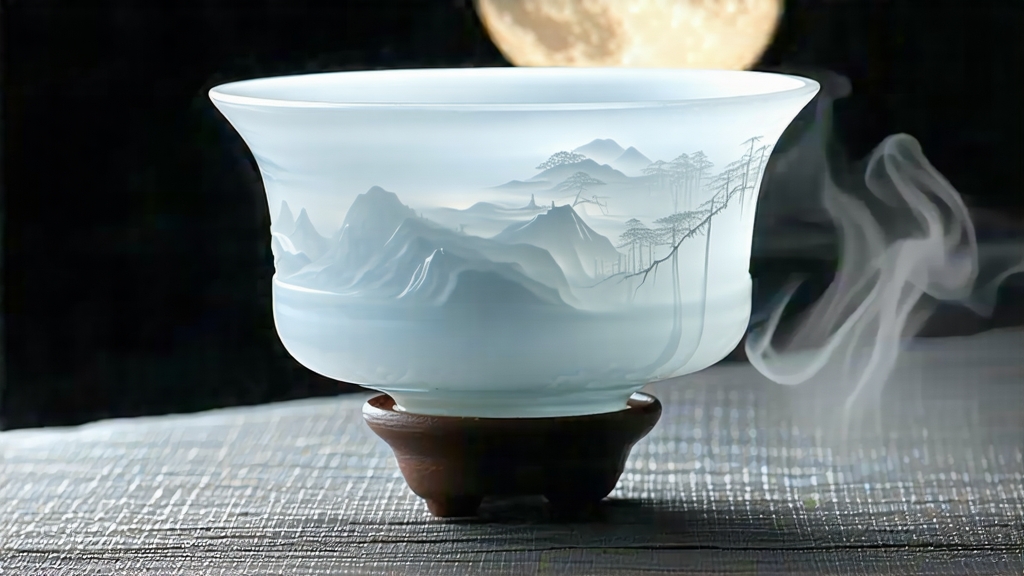
Tucked high on the forested ridges of Yunnan’s Simao and Lincang prefectures, a tea that refuses to see the sun is quietly transforming the global image of Chinese white tea. International drinkers readily name Silver Needle or White Peony, yet few have tasted Yue Guang Bai—literally “Moonlight White”—a cultivar whose entire life cycle is choreographed around darkness. From dusk-plucked buds to pre-dawn indoor withering, every step pays homage to the Dai minority’s ancient belief that “only the moon can lock the soul of the leaf.” The result is a tea that tastes like liquid ivory: silky, orchid-sweet, and faintly cooling, as if the lunar glow itself were steeped in the cup.
Historical whispers place Yue Guang Bai’s birth in the late 1990s, when a small state-run factory near Jinggu County experimented with white-processing techniques on large-leaf Yunnan material traditionally destined for pu-erh. Local legend, however, antedates this account by centuries. Dai elders speak of “moon maidens” who picked tea only when the lunar disk hung full, believing that yang energy from the sun would bruise the leaf’s yin tranquility. Whatever the truth, the tea remained virtually unknown outside Yunnan until 2004, when a Beijing tea artist served it at the China-Africa Summit; delegates dubbed it “the champagne of white tea,” and overnight demand outstripped the meager village output. Today, certified gardens climb from 1,200 m to 2,000 m, where old-growth Camellia sinensis var. assamica trees—some exceeding 300 years—send their roots into mineral-rich laterite, gifting the leaf a wild honeyed thickness impossible to replicate at lower elevations.
Although Chinese white tea is officially categorized into Silver Needle, White Peony, Gong Mei, and Shou Mei, Yue Guang Bai occupies a liminal space. Its one-bud-one-leaf plucking standard mirrors White Peony, yet the cultivar (Da Bai, Da Hao, or local “big white” landraces) and the post-withering moonlight phase create a style so distinct that Yunnan’s 2020 provincial standard granted it separate status. Purists divide it into three grades: Supreme (80 % silver buds), Special (60 % buds), and Classic (40 % buds). Each grade carries a charcoal-gray back contrasting with a snow-white front, the color split said to symbolize the marriage of night and day.
Crafting Yue Guang Bai is a race against planetary rotation. Picking begins at twilight, when leaf temperature drops, reducing enzymatic browning. Withering trays are laid not in sun but under open-sided barns where mountain breezes and soft moonlight coax moisture away for 48–72 hours. Masters call this phase “moon bathing,” insisting that low-level lunar radiation alters chlorophyll degradation pathways, heightening floral lactones. Once the leaf feels feather-light, it is briefly piled (5–7 cm) for a micro-oxidation of 2–4 hours—longer than Fujian white teas but far shorter than oolong—then heat-fixed at 45 °C to lock in fragrance. No rolling, no roasting; the cell structure stays intact, explaining the tea’s forgiving brewability and age-worthy character.
To unlock its nocturnal poetry, treat the leaf like a shy guest: welcome but never rushed. Use 4 g for a 150 ml gaiwan or 5 g for a 220 ml glass teapot. Water should be 85 °C—hot enough to wake aromatics yet cool enough to preserve velvet texture. Begin with a 30-second “moon rinse,” discarding the liquor to awaken dormant buds. First infusion: 45 seconds, lifting the lid to release orchid and ripe apricot notes. Second: 35 seconds, revealing a color like liquid topaz and a taste faintly reminiscent of chilled sake. Third: 50 seconds, when honey transitions into cucumber-fresh minerality. Fourth and fifth can push 70–90 seconds; even at sixth infusion the leaves surrender white peach and alpine air. Throughout, keep the lid ajar between pours to prevent “solar” stewing that would betray the leaf’s lunar upbringing.
Professional cupping follows a quieter rhythm. Place 3 g in a 110 ml white porcelain tasting set, infuse with 90 °C water for five minutes. Evaluate dry leaf aroma first: